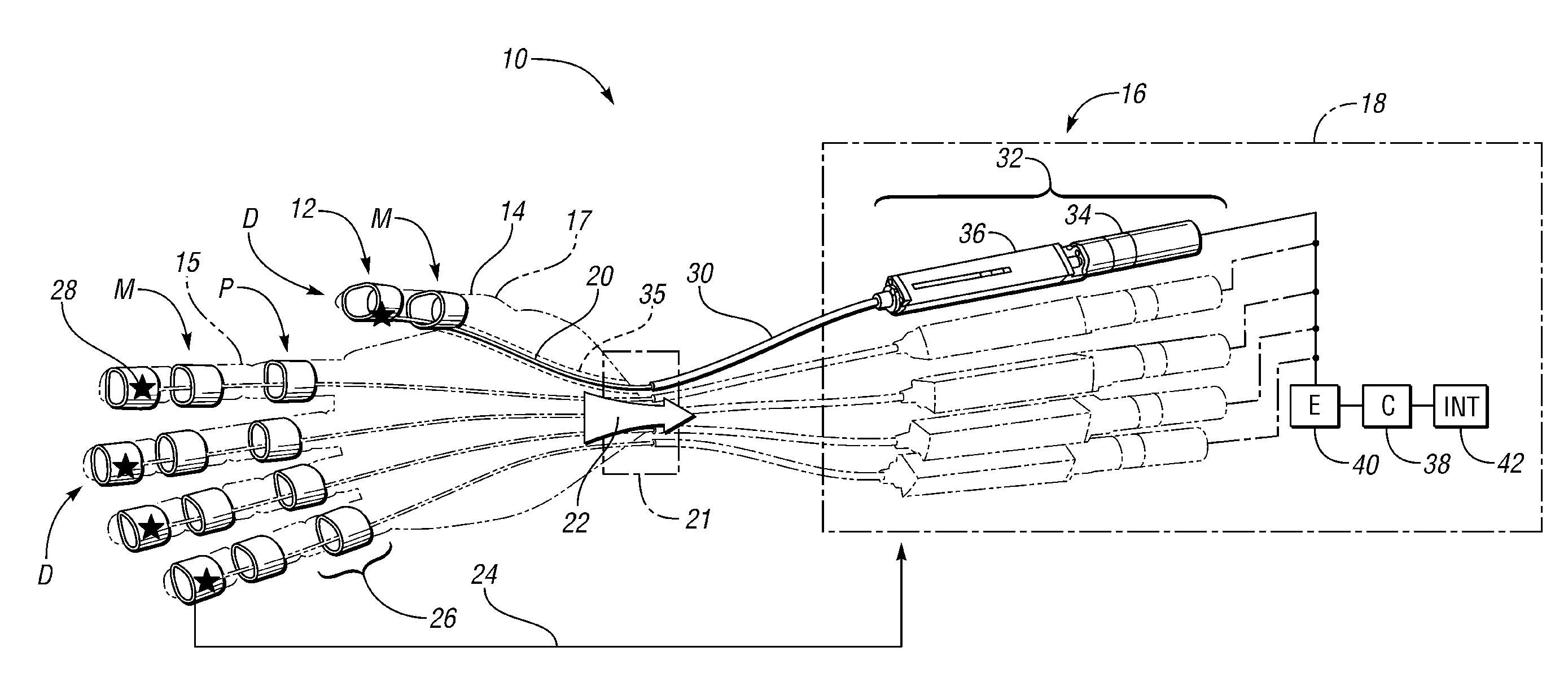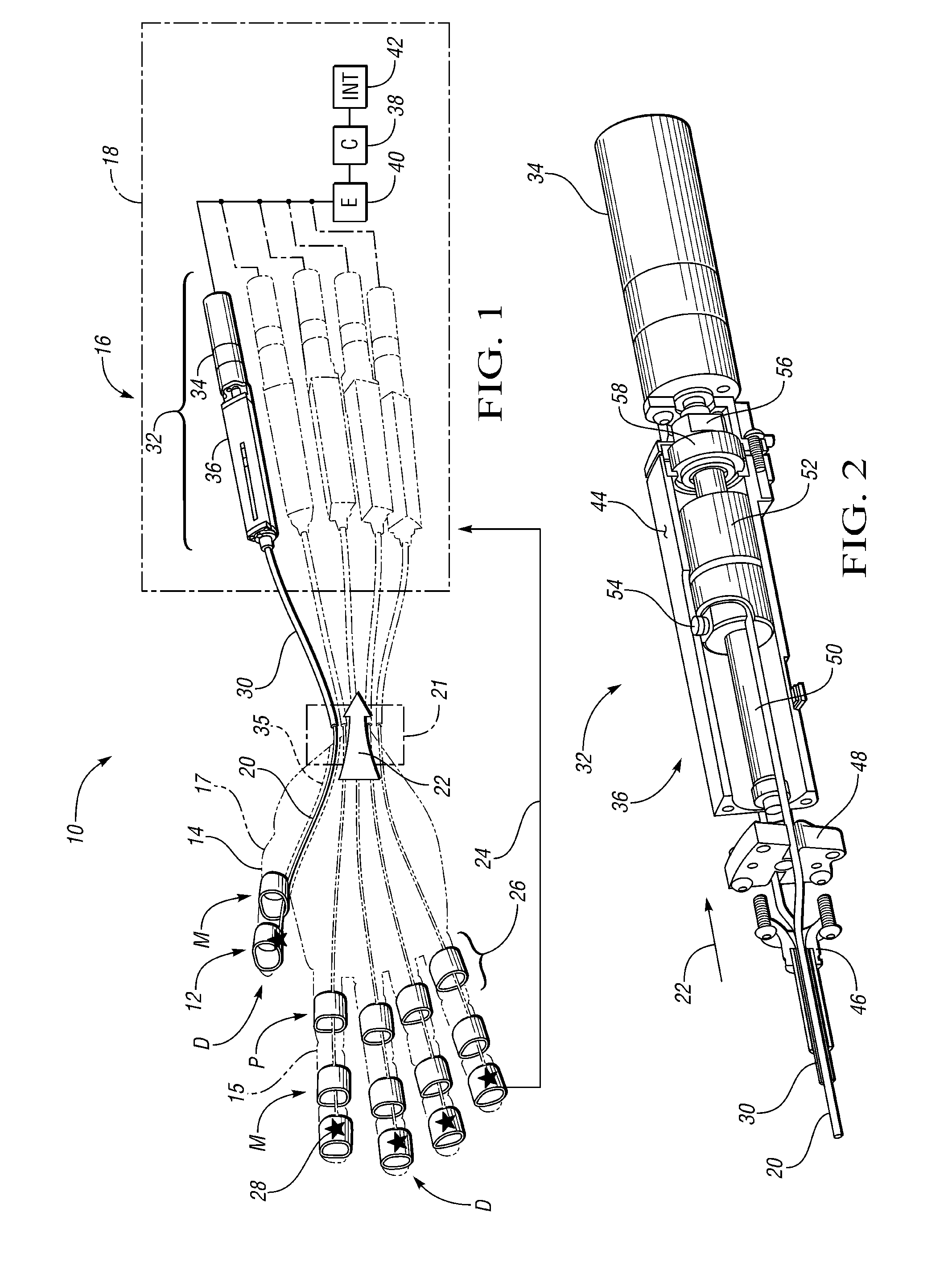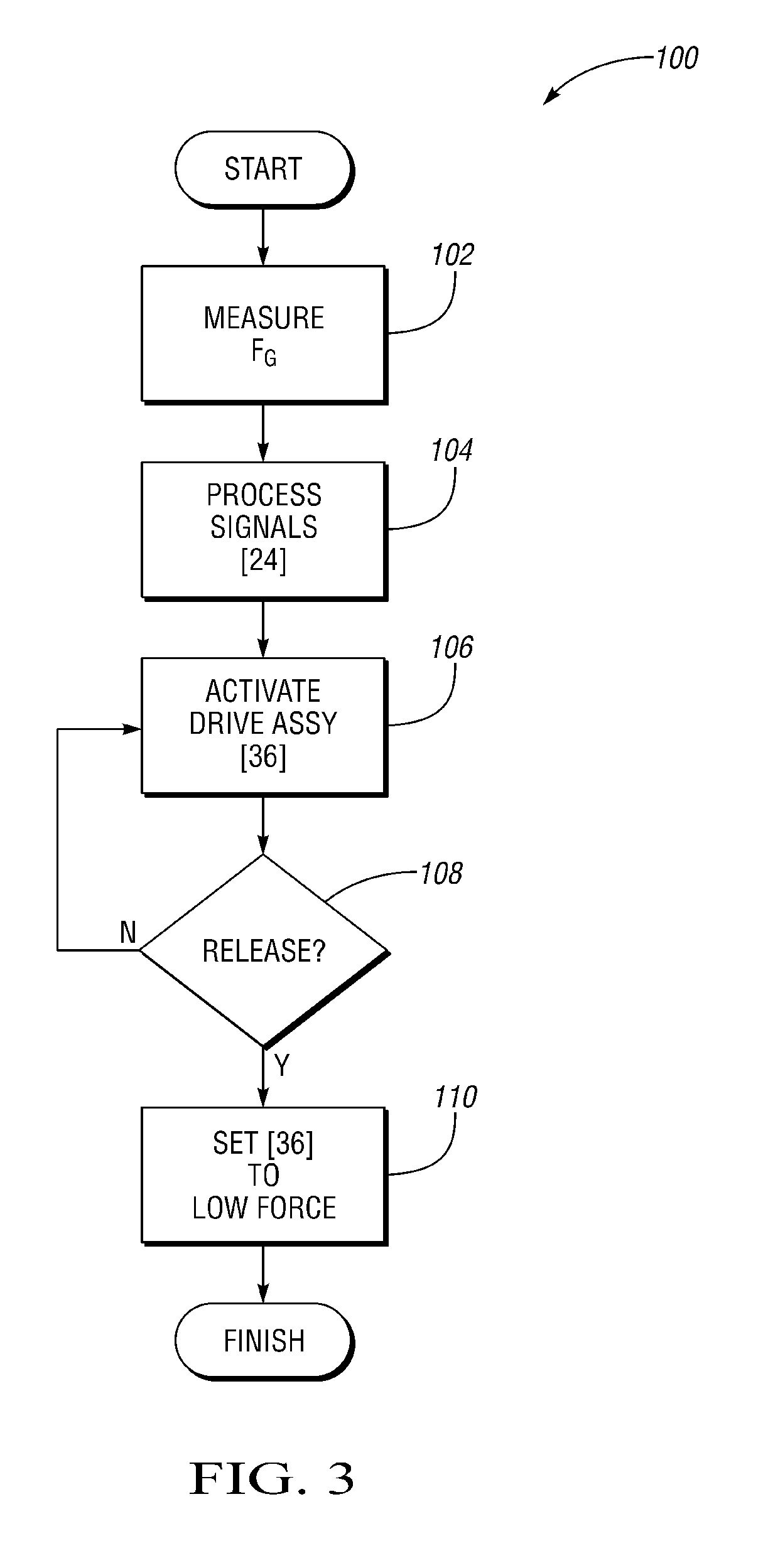Human grasp assist device and method of use
a technology of human operator and assist device, which is applied in the direction of hoisting equipment, programme control, instruments, etc., can solve the problems of affecting the resultant product quality and/or process efficiency, affecting the innate ability of the operator to flex, and certain tasks may pose unadjustable stress on the operator, so as to optimize the amount of grasping force applied and the operator's innate ability to flex
- Summary
- Abstract
- Description
- Claims
- Application Information
AI Technical Summary
Benefits of technology
Problems solved by technology
Method used
Image
Examples
Embodiment Construction
[0014]With reference to the drawings, wherein like reference numbers refer to the same or similar components throughout the several views, and beginning with FIG. 1, a motorized grasp assist device 10 is adapted for augmenting the ability of an operator to flex the various fingers and phalanges of the operator's hand (not shown). The grasp assist device 10 includes a glove portion 12 constructed of a relatively lightweight material 17 that covers at least the palm side of an operator's hand.
[0015]In addition to the glove portion 12, the device 10 includes a tendon drive system (TDS) 16 fully encased or contained at least partially within a flexible sleeve portion 18. The TDS 16 is linked to the glove portion 12 via a set of flexible tendons 20, with an augmenting tensile force (arrow 22) applied to the tendons in response to a feedback signal 24 from the glove portion. The actuation process is described in further detail below with reference to FIG. 3.
[0016]The material 17 of glove ...
PUM
 Login to View More
Login to View More Abstract
Description
Claims
Application Information
 Login to View More
Login to View More - R&D
- Intellectual Property
- Life Sciences
- Materials
- Tech Scout
- Unparalleled Data Quality
- Higher Quality Content
- 60% Fewer Hallucinations
Browse by: Latest US Patents, China's latest patents, Technical Efficacy Thesaurus, Application Domain, Technology Topic, Popular Technical Reports.
© 2025 PatSnap. All rights reserved.Legal|Privacy policy|Modern Slavery Act Transparency Statement|Sitemap|About US| Contact US: help@patsnap.com



